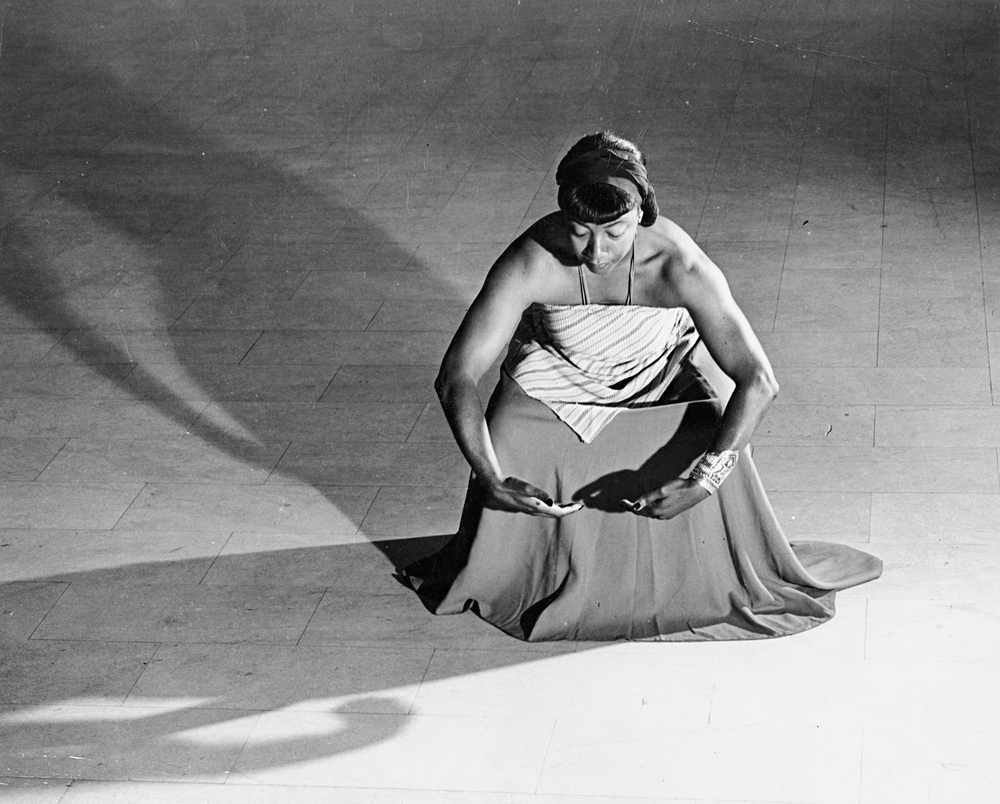Artist to Know: Thelma Johnson Streat
Black Art Auction to Offer Works by American Painter and Dancer
When Thelma Johnson Streat was at the midpoint of her painting career, she felt the need to step beyond the canvas. She was already making murals that celebrated multiculturalism and rewrote the narrative around Black Americans. Yet after she received threats from the Ku Klux Klan, Streat decided to take her educational efforts a step further. She began performing dances in front of her paintings. Dance was a natural extension of her art practice, one she hoped would lead to better dialogue and understanding. Streat eventually became a groundbreaking artist and an early advocate of performance art.
Two oil paintings by Streat will be available in Black Art Auction’s upcoming single-owner sale from the collection of Melvin Holmes. The bidding will start at 12:00 PM EDT on July 17th, 2021. Before placing a bid, learn more about Thelma Johnson Streat and her work.

In 1911, Thelma Johnson Streat was born in Yakima, Washington. Her parents were of African and Cherokee descent, influences that Streat often returned to in her mature work. She grew up lonely and isolated in a nearly all-white neighborhood. Still, she showed great promise as an artist and received her first big break while in high school. Streat’s portrait of a local priest won an honorary mention from the Harmon Foundation in New York City. The award kick-started Streat’s career.
Streat eventually moved to San Francisco, where she started with the Works Progress Administration (WPA). She joined a generation of artists who created inspiring pieces during the Great Depression. While completing sweeping murals depicting the Black working class, Streat encountered famed Mexican muralist Diego Rivera. Both artists wished to elevate the contributions of Black and Indigenous people within the American mainstream. Rivera recruited Streat to help create his Pan American Unity mural, allowing her unusual liberties in its design and execution.
Rivera collected Streat’s paintings and publicly supported her career, stating: “The work of Thelma Johnson Streat is in my opinion one of the most interesting manifestations in this country at present, it is extremely evolved and sophisticated enough to reconquer the grace and purity of African and American art.”
Streat lived during the height of the Harlem Renaissance, and many notable artists and cultural figures ran in her personal circle. Despite this, her life contained many firsts. Alfred Barr, the founding director of the Museum of Modern Art, purchased Streat’s Rabbit Man painting in the early 1940s. She became the first African American woman with art in the MoMA. Later, Streat would be among the first to blend interpretive dance and visual art, a contribution that has long gone unnoticed in the art world.

Thelma Johnson Streat’s paintings intentionally avoided the popular artistic movements of her time. As New York artists launched into Abstract Expressionism, Streat intentionally used playful abstraction to encourage cross-cultural discourse. She believed that early education could eradicate the hate she faced in her lifetime. Throughout her career, Streat traveled to Haida Gwaii, Haiti, Ireland, Hawaii, and Mexico. She learned from the Indigenous people of each location and gradually built a transnational artistic lexicon.
The upcoming Black Art Auction event will feature Streat’s Girl With Flower oil painting from the early 1950s (USD 4,000 – $6,000). This piece depicts a young girl in Streat’s signature style. She wears a patterned pink shirt and gazes at the viewer with a slight smile. Bidders can also consider Black Kings, which Streat painted when she was in her early 20s and working for the WPA. Showing two figures in sharp profile, Black Kings is one of two known Streat paintings inspired by ancient Egyptian art ($5,000 – $7,000).
Streat was a prolific artist and had a robust network of collectors. Most of her paintings sold for low prices and disappeared into private collections. In recent years, some of Streat’s work has returned to the public art market. Treadway Toomey Auctions offered Executive Order #8802 in a 2015 sale. The piece references President Franklin D. Roosevelt’s 1941 executive order prohibiting racial or ethnic discrimination in the defense industry. It sold for $5,000 after 29 competitive bids. Several of Streat’s other paintings have sold in recent years, ranging in hammer price from $900 to $5,500.

Despite Streat’s absence in the mainstream art canon, she enjoyed a degree of fame during her lifetime. Langston Hughes, Katherine Dunham, Vincent Price, and Walter Paepcke all collected her paintings. Streat danced at Carnegie Hall and Buckingham Palace. However, after she died of a heart attack at 47 years old, Streat’s work fell to the wayside. It took another 30 years before her family decided to revive her legacy, an effort that continues today. Art critics, scholars, and collectors are now returning to an artist who bridged cultural gaps and imagined a more understanding future.
Black Art Auction will offer two paintings by Thelma Johnson Streat in the upcoming sale of the Melvin Holmes Collection. View the complete catalog and register to bid on Black Art Auction’s website.
Looking for more artist profiles? Auction Daily recently explored the work of Baroque-era artist Viviano Codazzi.









